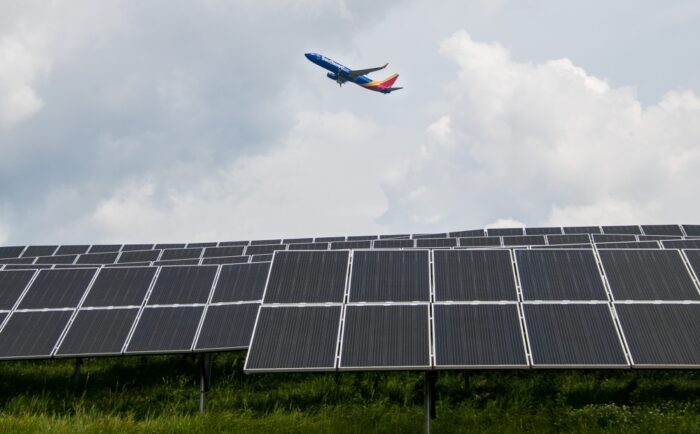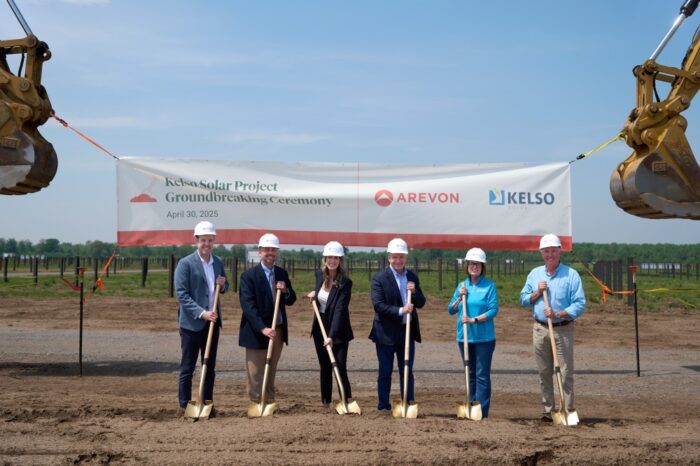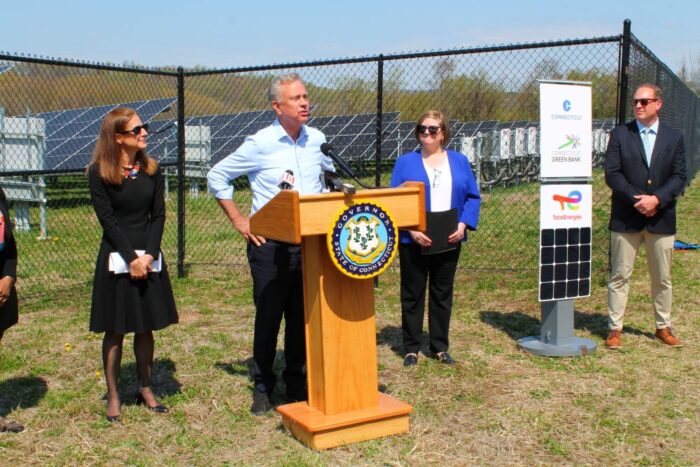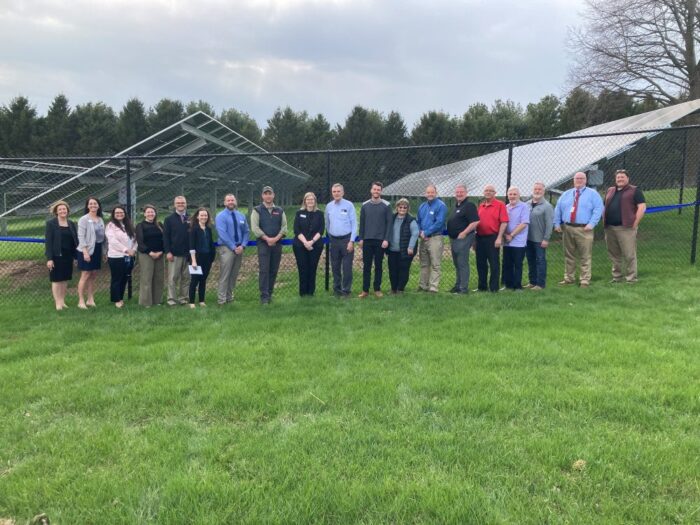May 5, 2025
In this edition of Projects weeklyPittsburgh International Airport will add 11,216 solar panels on top of a closed landfill, Increase the range of the renewable energy supply regional energy network. In addition, Arevon started construction of the $ 500 million Kelso Solar project in Missouri, Connecticut Correctional Facilities that are now active on solar energy, and Ameresco completes solar upgrades at Southwest Wisconsin Technical College. Keep reading to stay up to date with these stories and more.
Pittsburgh International Airport Expands his tanning field. In collaboration with Duquesne Light Co. (DLC) and IMG Energy SolutionsA Liberty Energy Company, the airport, announced the expansion as part of the Energy Innovation Plans of the Airport. The project marks the first power purchase agreement of DLC, stimulating local energy production and economic development, while renewable energy becomes more accessible to the Pittsburgh region.
“The expansion of more than 11,000 solar panels to the existing solar field of Pittsburgh International Airport is a fantastic step in the direction of a more sustainable energy seeking survey for our region,” said Sara Innamorato by Allegheny County. “I am very happy that our airport is an energy leader and that our local partners in DLC and IMG are able to help realize important projects such as these.”


Cool factor: The new solar project is a supplement to the existing eight-hectare solar array of the airport by adding an additional 12 hectare on top of a closed landfill, otherwise not suitable for development. The expansion will add 11,216 highly efficient solar panels to the existing tanning field, making it possible to generate an additional 4.7 MW of renewable energy. The electricity that is generated from the new Zonneveld will be delivered to the regional electric grid, which offers the region extra renewable energy and makes DLC’s vision on a future of renewable energy possible.
The expansion of the sun is the newest energy initiative at PIT that maximizes the use of his property that contributes to the first Microgrid that is already appropriate and is planning to produce sustainable aviation fuel on site. The sun expansion will be completed in 2027 and will be located next to existing solar panels near the exit of the airport of I-376. The original eight hectares contain nearly 10,000 solar panels as part of the 23 MW Microgrid project of the airport, launched in 2021 as the first to feed an airport completely through natural gas and solar energy.
Arevon breaks the land at $ 500 million Kelso Solar Project in Missouri
Arevon Energy Inc. Organized a groundbreaking event for its 430 MWDC Kelso 1 & 2 solar projects in Scott County, Missouri. The company will possess and exploit the long -term project, whereby the first phase is expected to achieve commercial activities by the end of 2025 and the second phase is estimated to start in the first quarter of 2026 activities.


Cool factor: Kelso Solar is the first utility programs on Nuts scale renewable energy project in Missouri. The development and construction of the project of more than $ 500 million have resulted in a significant increase in economic activity in Scott County and the surrounding areas. During peak construction, Kelso Solar will employ more than 450 employees, mainly from local work to build the project. Both phases are built by the Renewable Energy Business from Primoris Services Corporation, a leading supplier of Engineering, Purchasing and Bouwdiensten for the Energy Molation Industry. Local branches such as restaurants, hotels and shops have benefited positively from the construction activities in the area. During its multidecade activities, an estimated Kelso Solar is paid more than $ 34 million to local authorities, to support schools, infrastructure and first responds.
“Kelso Solar Marks Arevon’s toegang tot Missouri en wanneer operationeel, zal de geïnstalleerde zonnecapaciteit van de staat met bijna 50 procent verhogen. Dit belangrijke project bevordert de groeiende aanwezigheid van Arevon in de Midwest -regio van de Verenigde Staten, een prioriteitsmarkt voor de ontwikkelingsactiviteiten van ons bedrijf,” zei Kevin Smith, CEO bij Arvon. “Celebrating the construction of the project in addition to our partners and stakeholders also gives us the opportunity to recognize the enormous economic benefits that the project offers. I am gratefully grateful to Scott County for his partnership and his leadership in expanding homegrown and cost -effective energy in the state.”
Connecticut correction facilities that now work on solar energy
Seven solar energy systems are installed and now work at six of the Correction Facilities of Connecticut. The series of projects will generate millions of cost savings and at the same time deliver clean, renewable energy to the facilities. Because correction facilities work non-stop 365 days a year, they are among the largest consumers of energy from all state-owned companies.
“Installing solar energy systems at Correctional Facilities is a way in which we can deliver cost savings in the activities of the state government, while also reducing our CO2 footprint,” said Gov. Ned Lamont. “Correction facilities offer a necessary public safety service for our communities, and their outside activities require a considerable amount of energy to function. I am happy that we can complete these projects and that our correction facilities can benefit from the benefits of solar energy.”


Cool factor: The seven systems will collectively supply 8.3 MW of renewable energy to the correction facilities, which saves the state more than $ 11 million in energy costs during the life of the panels. The projects are a collaboration between the Connecticut Department of Correction (DOC) and the Connecticut Department of Administrative Services (DAS), together with the Connecticut Green Bank And TottyergiesA globally integrated energy company. They were funded by the Connecticut Green Bank in collaboration with Totaleenergiën. The company will possess, exploit and maintain the systems through a electricity purchase agreement that is carried out by DAS.
The correction facilities that these solar energy systems use include:
- Cheshire Correctional Institution, Cheshire (2.4 MW)
- Enfield Correctional Institution, Enfield (181 kW)
- Manson Youth Institution, Cheshire (2.2 MW)
- Osborn Correctional Institution, Somers (2.2 MW)
- Robinson Correctional Institution A, Enfield (83 kW)
- Robinson Correctional Institution B, Enfield (167 kW)
- Willard Correctional Institution, Enfield (1 MW)
Ameresco completes Zonne -Upgrades on Southwest Wisconsin Technical College
Ameresco Inc. has a groundbreaking project for Zonne -Array and battery storage completed at the Southwest Wisconsin Technical College, the winner of the 2025 Aspen Prize for Community College Excellence. This marks the first such project in the history of the college and represents an important step forward in the dedication of the Sustainability and Energy Efficiency Institution.
Southwest Tech has concluded a contract with Ameresco to develop a 10-year extensive energy plan. The plan, which was fully completed in January 2024, outlines a path to reach a 62 percent reduction in the use of the construction of energy consumption and a reduction of 100 percent in the emissions of greenhouse gases in the coming decade by four primary strategies: electrification of gas-fired equipment, lightup grades, hvac-installations.


Cool factor: The $ 1.6 million design-building project comprises a 300 kW of solar panels and a battery storage system of 125 kW, installed in an area behind the Knox Learning Center. The electricity produced by the Zonne Array will be used exclusively for building 400, one of the most populated buildings on campus in the summer. The system is expected to produce around 352,710 kWh, or approximately 60% of the electricity of the building, which saves the college about $ 30,000 a year in utility costs. In the case of a malfunction, the combination of the storage system for solar and battery energy is designed to offer a resilient energy supply to the Student Services Building on campus.
“This collaboration with the Southwest Wisconsin Technical College is a radiant example of how solutions for renewable energy can be seamlessly integrated into educational institutions,” said Lou Maltezos, President – Central & Western USA, Canada Regions in Ameresco. “By using the power of solar energy and advanced battery storage, we not only reduce the CO2 footprint of the college, but we also put a precedent for other institutions to follow. We are proud of the Southwest Wisconsin Technical College in their journey to a greener and more energy-efficient future.”
Alliant Energizes 200 MW Pleasant Creek Solar Project in Iowa
Alliant Energy has started operations in a 200 MW solar facility in Linn County, Iowa. The company has also renamed the site Pleasant Creek Solar After being known as Duane Arnold Solar during development and construction.
The project in Linn County – now owned by Alliant Energy – was developed by Duane Arnold Solar LLC, a subsidiary of Nextera Energy Resources LLC. The construction was completed in two phases. The first 50 MW started working in March 2024, while the remaining 150 MW was put into use in December 2024.
Cool factor: The 200 MW Pleasant Creek Solar Facility – the largest solar field in Iowa – is expected to generate sufficient electricity to feed around 40,000 houses annually. Combined with the Creston and Wever Solar projects Which Alliant Energy will be put into use in 2024, the energy company now uses the sun to generate 400 MW new solar energy sources in Iowa. These solar projects supplement the approximately 1,300 MW Wind Resources Alliant Energy and works in the state.
“Pleasant Creek Solar is an example of our ‘All of the above’ energy strategy, resulting in cost-effective energy sources that increase reliability for customers,” said Mayuri Farlinger, president of Alliant Energy’s Iowa Energy Company and Vice-President of Operations. “Our investments in solar projects and energy system encourage economic growth by attracting companies to communities, creating jobs and stimulating tax revenues.”
Tags: commercial and industrial, community sun

